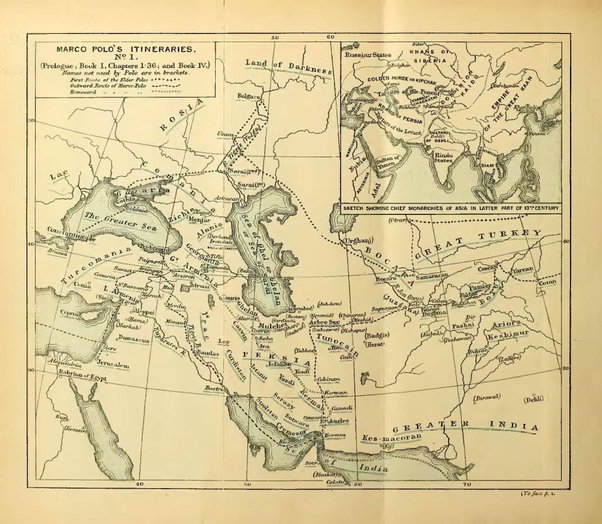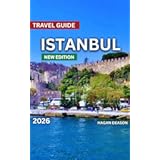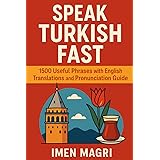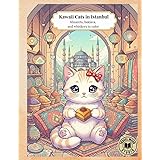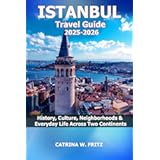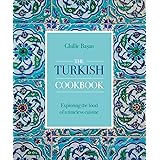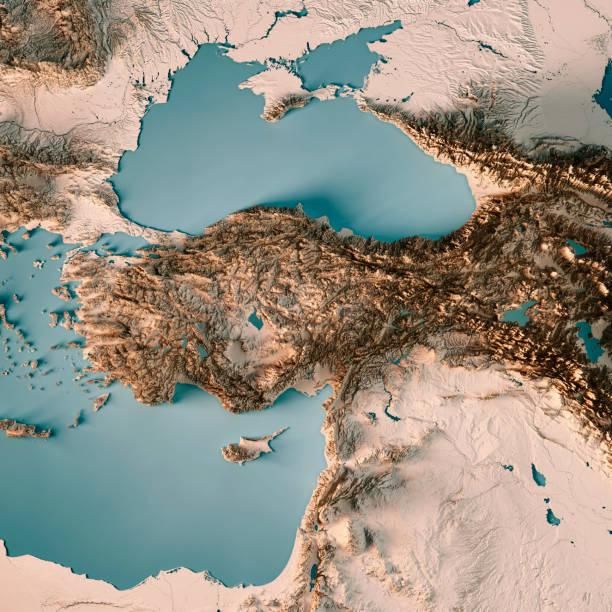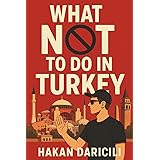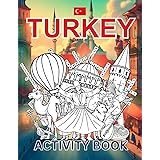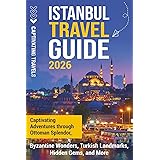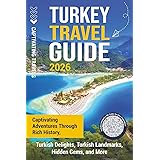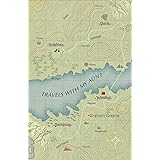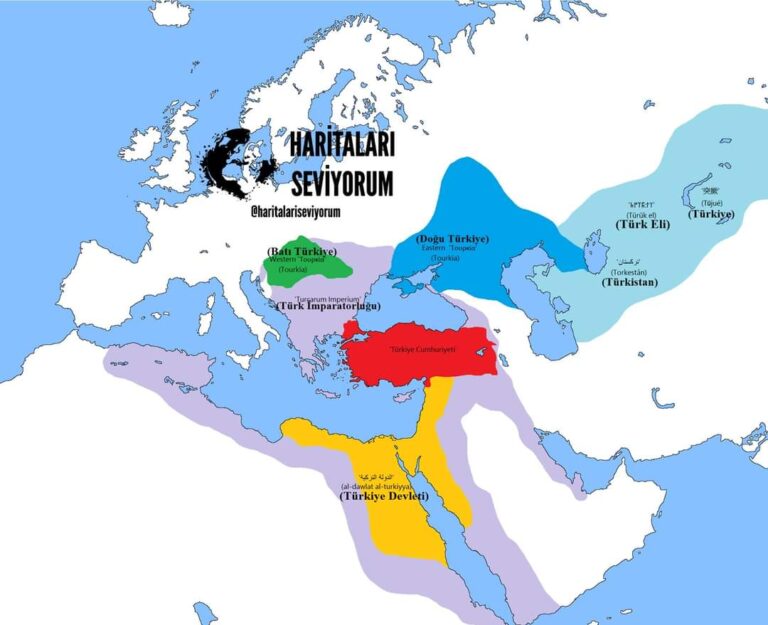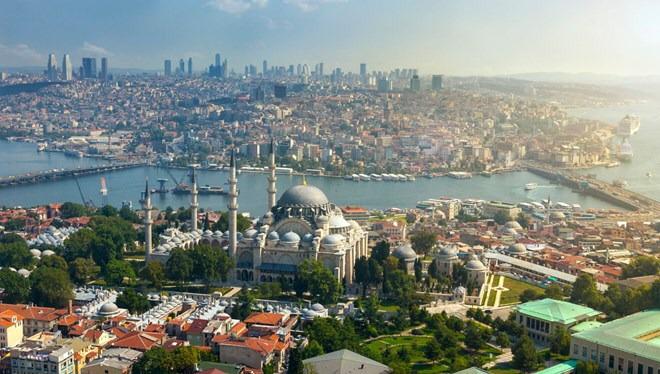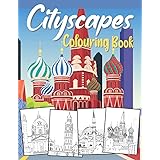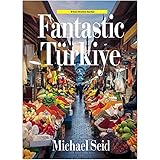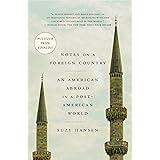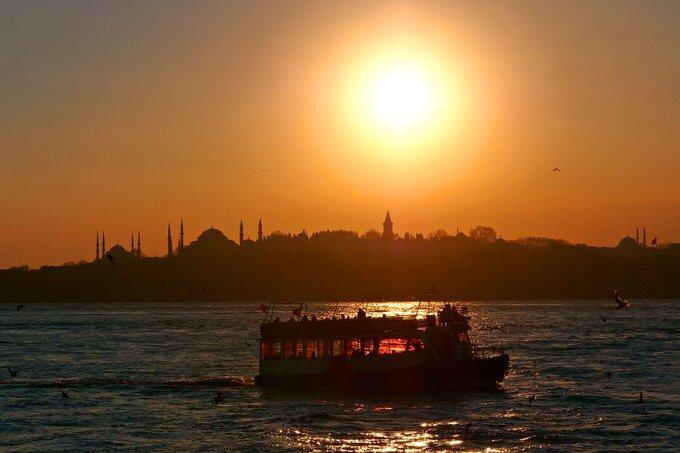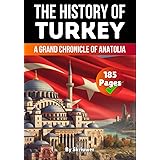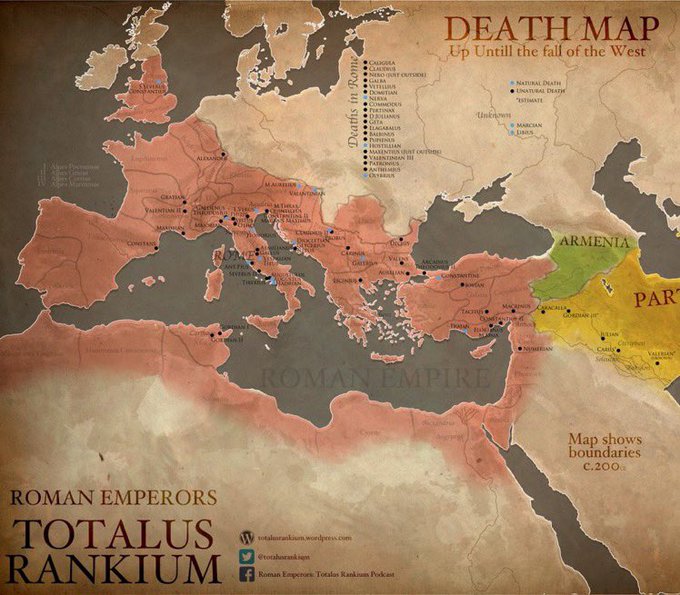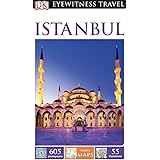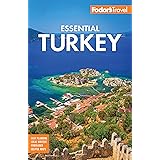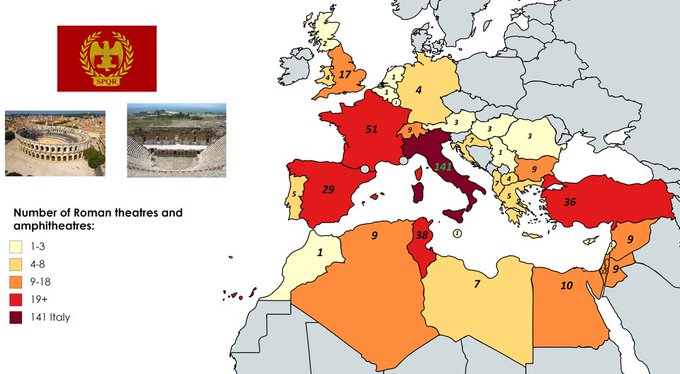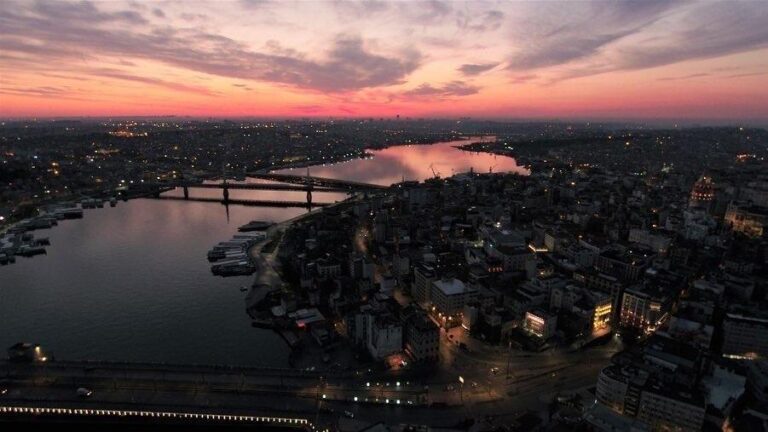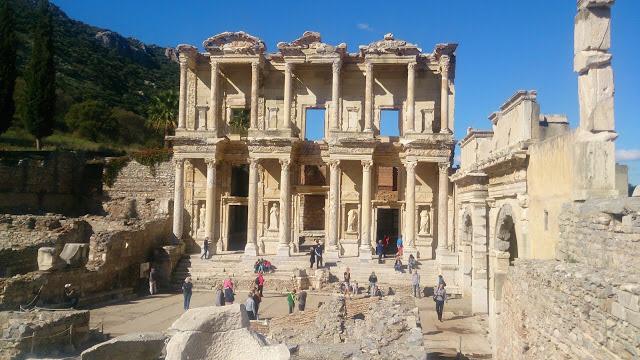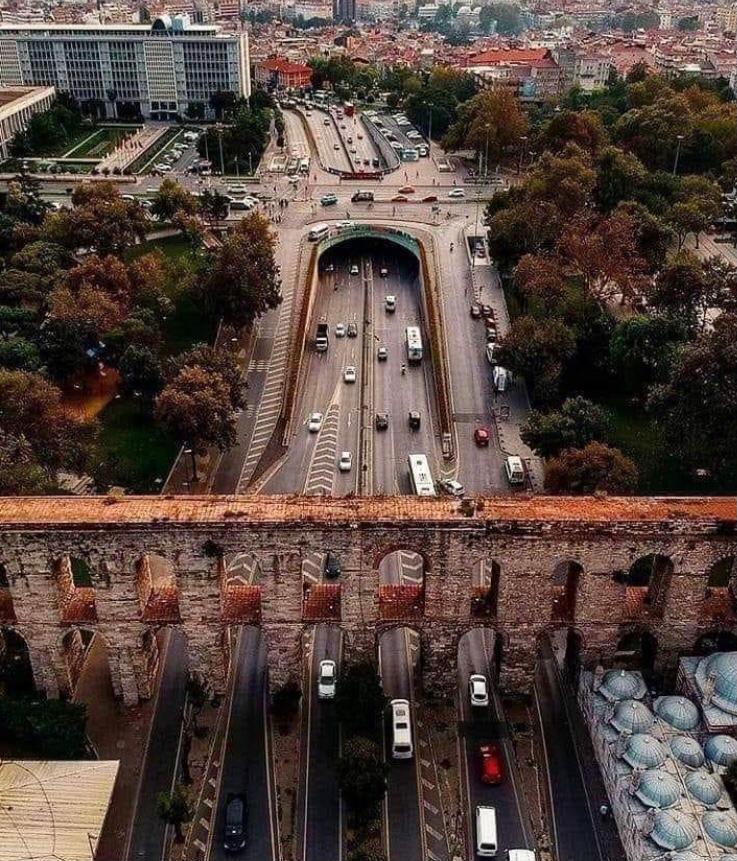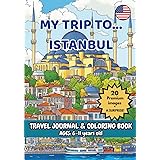Marco Polo called Anatolia Turcomania. That is Land of Turkmen, because Turks descend from Turkmens. Marco Polo gave the name “Turkey” to entire Central Asia instead, because all Turkic groups were called “Turk”, but the subgroups had different names like Uzbek/Kipchak/Karluk/Turkmen/Tatar. Anatolian Turks were known as Turkmen, because almost all the Turkics that migrated to Anatolia were Turkmens from modern day Turkmenistan, Iran, Caucasia and Uzbekistan. So the name “Turkey” exclusively referred to Central Asia until Ottoman Empire. After the Ottoman expansions into Europe and various parts of West Asia and North Africa, Westerners started to call Ottoman Empire Turkey.
3D rendered view of Turkey
Source: https://buff.ly/2HsAlj9
https://i.redd.it/9od6yhq2seu51.jpg
What NOT To Do - Turkey: An Honest, Hilarious & Helpful Guide to Traveling Smart in Turkey
$9.99 (as of 13/12/2025 23:37 GMT +03:00 - More infoProduct prices and availability are accurate as of the date/time indicated and are subject to change. Any price and availability information displayed on [relevant Amazon Site(s), as applicable] at the time of purchase will apply to the purchase of this product.)The Rough Guide to Turkey (Travel Guide with eBook) (Rough Guide Main Series)
$14.29 (as of 13/12/2025 23:37 GMT +03:00 - More infoProduct prices and availability are accurate as of the date/time indicated and are subject to change. Any price and availability information displayed on [relevant Amazon Site(s), as applicable] at the time of purchase will apply to the purchase of this product.)Turkey Activity Book For Kids: Learn about Turkish History, Landmarks, Wildlife While Solving Word Puzzles, Mazes, Crosswords, and Coloring Pages for Kids and Families
$9.99 (as of 13/12/2025 23:37 GMT +03:00 - More infoProduct prices and availability are accurate as of the date/time indicated and are subject to change. Any price and availability information displayed on [relevant Amazon Site(s), as applicable] at the time of purchase will apply to the purchase of this product.)Speak Turkish Fast: 1500 Useful Phrases with English Translations and Pronunciation Guide
$12.99 (as of 13/12/2025 23:37 GMT +03:00 - More infoProduct prices and availability are accurate as of the date/time indicated and are subject to change. Any price and availability information displayed on [relevant Amazon Site(s), as applicable] at the time of purchase will apply to the purchase of this product.)Istanbul Travel Guide: Captivating Adventures Through Ottoman Splendor, Byzantine Wonders, Turkish Landmarks, Hidden Gems, and More (Traveling the World)
$18.69 (as of 13/12/2025 23:37 GMT +03:00 - More infoProduct prices and availability are accurate as of the date/time indicated and are subject to change. Any price and availability information displayed on [relevant Amazon Site(s), as applicable] at the time of purchase will apply to the purchase of this product.)Crescent and Star: Turkey Between Two Worlds
$14.99 (as of 13/12/2025 23:37 GMT +03:00 - More infoProduct prices and availability are accurate as of the date/time indicated and are subject to change. Any price and availability information displayed on [relevant Amazon Site(s), as applicable] at the time of purchase will apply to the purchase of this product.)Welcome to Hell?: In Search of the Real Turkish Football
$3.72 (as of 13/12/2025 23:37 GMT +03:00 - More infoProduct prices and availability are accurate as of the date/time indicated and are subject to change. Any price and availability information displayed on [relevant Amazon Site(s), as applicable] at the time of purchase will apply to the purchase of this product.)Istanbul Travel Guide 2025/2026: Sultanahmet, Beyoğlu: Shopping and Nightlife, Kadıköy, Balat and Fener, Markets and Shopping,Hagia Sophia,Must-See ... Galata Tower. (Best Travel Guides 2025)
$11.99 (as of 13/12/2025 23:37 GMT +03:00 - More infoProduct prices and availability are accurate as of the date/time indicated and are subject to change. Any price and availability information displayed on [relevant Amazon Site(s), as applicable] at the time of purchase will apply to the purchase of this product.)Istanbul Travel Guide 2026: Top Places to Visit, Things to Do, Exploring Neighborhood, Itineraries, Festivals and Events, Food and Drink, Shopping, Day ... And Culture. (EXPLORE THE GLOBE Book 9)
$4.99 (as of 13/12/2025 23:37 GMT +03:00 - More infoProduct prices and availability are accurate as of the date/time indicated and are subject to change. Any price and availability information displayed on [relevant Amazon Site(s), as applicable] at the time of purchase will apply to the purchase of this product.)Secret Istanbul ('Secret' guides)
$11.05 (as of 13/12/2025 23:37 GMT +03:00 - More infoProduct prices and availability are accurate as of the date/time indicated and are subject to change. Any price and availability information displayed on [relevant Amazon Site(s), as applicable] at the time of purchase will apply to the purchase of this product.)Lonely Planet Turkiye (Travel Guide)
$16.30 (as of 13/12/2025 23:37 GMT +03:00 - More infoProduct prices and availability are accurate as of the date/time indicated and are subject to change. Any price and availability information displayed on [relevant Amazon Site(s), as applicable] at the time of purchase will apply to the purchase of this product.)Turkey Travel Guide: Captivating Adventures through Rich History, Turkish Delights, Turkish Landmarks, Hidden Gems, and More (Traveling the World)
$13.69 (as of 13/12/2025 23:37 GMT +03:00 - More infoProduct prices and availability are accurate as of the date/time indicated and are subject to change. Any price and availability information displayed on [relevant Amazon Site(s), as applicable] at the time of purchase will apply to the purchase of this product.)DK Top 10 Istanbul (Pocket Travel Guide)
$9.26 (as of 13/12/2025 23:37 GMT +03:00 - More infoProduct prices and availability are accurate as of the date/time indicated and are subject to change. Any price and availability information displayed on [relevant Amazon Site(s), as applicable] at the time of purchase will apply to the purchase of this product.)Turkey - Culture Smart!: The Essential Guide to Customs & Culture
$16.51 (as of 13/12/2025 23:37 GMT +03:00 - More infoProduct prices and availability are accurate as of the date/time indicated and are subject to change. Any price and availability information displayed on [relevant Amazon Site(s), as applicable] at the time of purchase will apply to the purchase of this product.)A Guide to Biblical Sites in Greece and Turkey
$11.00 (as of 13/12/2025 23:37 GMT +03:00 - More infoProduct prices and availability are accurate as of the date/time indicated and are subject to change. Any price and availability information displayed on [relevant Amazon Site(s), as applicable] at the time of purchase will apply to the purchase of this product.)The Rough Guide to Turkey (Travel Guide with eBook) (Rough Guide Main Series)
$14.29 (as of 13/12/2025 23:37 GMT +03:00 - More infoProduct prices and availability are accurate as of the date/time indicated and are subject to change. Any price and availability information displayed on [relevant Amazon Site(s), as applicable] at the time of purchase will apply to the purchase of this product.)Travels With My Aunt: (Vintage Voyages)
$14.02 (as of 13/12/2025 23:37 GMT +03:00 - More infoProduct prices and availability are accurate as of the date/time indicated and are subject to change. Any price and availability information displayed on [relevant Amazon Site(s), as applicable] at the time of purchase will apply to the purchase of this product.)Turkey for Kids: Travel Guide and Activity Book: Discover Turkish Culture, History, Landmarks and Traditions through Games, Puzzles and Fun Facts (Junior Globetrotters)
$9.99 (as of 13/12/2025 23:37 GMT +03:00 - More infoProduct prices and availability are accurate as of the date/time indicated and are subject to change. Any price and availability information displayed on [relevant Amazon Site(s), as applicable] at the time of purchase will apply to the purchase of this product.)Rick Steves Istanbul: With Ephesus & Cappadocia
$12.31 (as of 13/12/2025 23:37 GMT +03:00 - More infoProduct prices and availability are accurate as of the date/time indicated and are subject to change. Any price and availability information displayed on [relevant Amazon Site(s), as applicable] at the time of purchase will apply to the purchase of this product.)The Towers of Trebizond: A Novel (FSG Classics)
$6.44 (as of 13/12/2025 23:37 GMT +03:00 - More infoProduct prices and availability are accurate as of the date/time indicated and are subject to change. Any price and availability information displayed on [relevant Amazon Site(s), as applicable] at the time of purchase will apply to the purchase of this product.)Turkey: Concepts
TURKEYS concept
You can enlarge the map by clicking on it.
- Southern Belt: Maghreb. Egypt (Mamluk). Mesopotamia/Mashrik (Levant)
- Northern Belt: Hungary. Mongolia. Manchuria
- Middle Generation: Central Turkey. Transoxiana (41st Parallel)
The concept of TURKEY
Dear friend, have a nice day, have a nice sunday.
Today, June 23, is a hot Sunday in Istanbul. The topic we will talk about today is the concept of Turkey. Of course, we will talk about this in comparison with China.
When we look at China, it appears as the world’s superpower and America’s only scourge. Like us, China has had many dynasties and states, but the Chinese never say that we have established so many states, so many dynasties ruled us. They say only one thing, “China”. They constantly place the Chinese brand in the minds of the world. This is how they became a super economic power. They have been implementing a conscious plan in this regard for 50 years since 1978.
When we look back at us, we have established 16 states, Ottomans, Seljuks, Ghaznavids, Karakhanids, Göktürks, Huns, Uyghurs, states, dynasties, this is a mess. Why don’t we come out of this only with the concept of Turkey? What I mean by Turkey is that the Turkish state was founded on three continents. The name of the Ottomans was European Turkey, when you look at the British maps established in Europe, they always write Turkey as the European part, and the Asia Minor “Asia Minor” for the Anatolian part. “Devlet ü Türkiyye” founded by the Mamluks in Africa, and our final state established in Anatolia is the Republic of Turkey, “Turkey”. Now, in the states we have established in Asia, Europe and Africa, there is always an emphasis on Turkey.
What has always been thought for us is that they establish the state and then destroy it. It has been so, these states have destroyed each other. Then, we need to unite the Turkish states, starting from Morocco on the Atlantic Ocean coast to the Pacific coast, under the identity of Turkey, by going beyond the state configurations in the history of the Turkish World, Turkistan style namings and dynastic namings and coming out with a different perspective.
Today, China has a population of 1.5 billion, but Turkey is the leader of the Islamic World, which has 1.5 billion. Turkish communities are in it. Then we will have brought two equal forces face to face. The yield of this; Just as “Made in China” is written on the back of a product, what we need to do is to spread the “Made in Turkey” branding, in these 3 continents, which is actually 4 continents. If we count India as a continent, because there are 5 states, that is also is a subcontinent. Creating a great power by combining the products in these 4 continents under the name of Turkey brand will be to create the perception of one Turkey.
GREAT TURKEY” concept
My dear friend,
I would like to share my thoughts on the concept of “Great Turkey” with you. The concept of “Great Turkey” was used for the first time in our country by one of the politicians, Süleyman Demirel. He also has a book titled “Great Turkey”. He always described Turkey as great.
When we look at today, can we describe Turkey as great, this is a question mark. In the concept of “Great Turkey” that Süleyman Bey meant, he was talking about Turkey with a large industry, he was talking about a Turkey with self-sufficient agriculture. In the pre-1980 period, the word industrialization was a key concept in Turkey’s agenda, and Turkey’s agriculture was self-sufficient. Can we see them today?
Also, in the 1990s, another great one began to be mentioned. But it was Clinton America that described it as great, and Greater China brought up the concept of “Greater China”. Now, by Greater China here, he meant the Chinese residing in that region of China, Hong Kong, Taiwan, Macao, and South East Asia in countries such as Indonesia, Malaysia, and the Philippines. We see this greatness as real today. China is now “Greater China”, “Greater China”.
After the Bush administration, which took over the United States in the 2000s, America abandoned this concept. This concept was only relevant with Clinton. Now China now buys energy in yuan. Abandoning the US dollar, bringing the silk road to life, then China is great.
When we look back at Turkey now, for Turkey to be great, it must be as inclusive as China. What is meant by inclusiveness, how will “Great Turkey” be filled? In other words, I am talking about being like China, being in an influential position in the world. What I can see here as “Great Turkey” is Asia, India, Iran, Turkistan, where it took place for thousands of years in the countries where history has a legacy, then the Mughal Empire in India, the 3 continents where the Ottoman Empire is the legacy, Greater Asia, Africa, and Europe.
The first state known as Turkey today, the State of Turkey, was established in Egypt.
Great Turkey covers the borders of the Muslim world. It is not only the borders of the National Pact today, it covers the borders of all Muslim countries and countries where we have historical depth. My point of view is like this.
Greetings and love.
The Turkish Cookbook
$39.98 (as of 13/12/2025 23:37 GMT +03:00 - More infoProduct prices and availability are accurate as of the date/time indicated and are subject to change. Any price and availability information displayed on [relevant Amazon Site(s), as applicable] at the time of purchase will apply to the purchase of this product.)Turkey Activity Book For Kids: Learn about Turkish History, Landmarks, Wildlife While Solving Word Puzzles, Mazes, Crosswords, and Coloring Pages for Kids and Families
$9.99 (as of 13/12/2025 23:37 GMT +03:00 - More infoProduct prices and availability are accurate as of the date/time indicated and are subject to change. Any price and availability information displayed on [relevant Amazon Site(s), as applicable] at the time of purchase will apply to the purchase of this product.)The Rough Guide to Turkey (Travel Guide with eBook) (Rough Guide Main Series)
$14.29 (as of 13/12/2025 23:37 GMT +03:00 - More infoProduct prices and availability are accurate as of the date/time indicated and are subject to change. Any price and availability information displayed on [relevant Amazon Site(s), as applicable] at the time of purchase will apply to the purchase of this product.)Istanbul, City map 1:10.000, City Pocket map + The Big Five
$11.95 (as of 13/12/2025 23:37 GMT +03:00 - More infoProduct prices and availability are accurate as of the date/time indicated and are subject to change. Any price and availability information displayed on [relevant Amazon Site(s), as applicable] at the time of purchase will apply to the purchase of this product.)The Mini Rough Guide to Istanbul and the Aegean Coast: Travel Guide with eBook
$9.63 (as of 13/12/2025 23:37 GMT +03:00 - More infoProduct prices and availability are accurate as of the date/time indicated and are subject to change. Any price and availability information displayed on [relevant Amazon Site(s), as applicable] at the time of purchase will apply to the purchase of this product.)Welcome to Hell?: In Search of the Real Turkish Football
$3.72 (as of 13/12/2025 23:37 GMT +03:00 - More infoProduct prices and availability are accurate as of the date/time indicated and are subject to change. Any price and availability information displayed on [relevant Amazon Site(s), as applicable] at the time of purchase will apply to the purchase of this product.)Kawaii Cats in Istanbul: Minarets, baklava, and whiskers to color
$12.99 (as of 13/12/2025 23:37 GMT +03:00 - More infoProduct prices and availability are accurate as of the date/time indicated and are subject to change. Any price and availability information displayed on [relevant Amazon Site(s), as applicable] at the time of purchase will apply to the purchase of this product.)Istanbul: City of Majesty at the Crossroads of the World
$5.99 (as of 13/12/2025 23:37 GMT +03:00 - More infoProduct prices and availability are accurate as of the date/time indicated and are subject to change. Any price and availability information displayed on [relevant Amazon Site(s), as applicable] at the time of purchase will apply to the purchase of this product.)Living in Istanbul
$29.49 (as of 13/12/2025 23:37 GMT +03:00 - More infoProduct prices and availability are accurate as of the date/time indicated and are subject to change. Any price and availability information displayed on [relevant Amazon Site(s), as applicable] at the time of purchase will apply to the purchase of this product.)Istanbul Travel Guide 2026: Top Places to Visit, Things to Do, Exploring Neighborhood, Itineraries, Festivals and Events, Food and Drink, Shopping, Day ... And Culture. (EXPLORE THE GLOBE Book 9)
$4.99 (as of 13/12/2025 23:37 GMT +03:00 - More infoProduct prices and availability are accurate as of the date/time indicated and are subject to change. Any price and availability information displayed on [relevant Amazon Site(s), as applicable] at the time of purchase will apply to the purchase of this product.)Istanbul: City of Majesty at the Crossroads of the World
$4.99 (as of 13/12/2025 23:37 GMT +03:00 - More infoProduct prices and availability are accurate as of the date/time indicated and are subject to change. Any price and availability information displayed on [relevant Amazon Site(s), as applicable] at the time of purchase will apply to the purchase of this product.)Travels With My Aunt: (Vintage Voyages)
$14.02 (as of 13/12/2025 23:37 GMT +03:00 - More infoProduct prices and availability are accurate as of the date/time indicated and are subject to change. Any price and availability information displayed on [relevant Amazon Site(s), as applicable] at the time of purchase will apply to the purchase of this product.)Turkey for Kids: Travel Guide and Activity Book: Discover Turkish Culture, History, Landmarks and Traditions through Games, Puzzles and Fun Facts (Junior Globetrotters)
$9.99 (as of 13/12/2025 23:37 GMT +03:00 - More infoProduct prices and availability are accurate as of the date/time indicated and are subject to change. Any price and availability information displayed on [relevant Amazon Site(s), as applicable] at the time of purchase will apply to the purchase of this product.)Turkish Cookbook: Exploring the Food of a Timeless Cuisine
$22.68 (as of 13/12/2025 23:37 GMT +03:00 - More infoProduct prices and availability are accurate as of the date/time indicated and are subject to change. Any price and availability information displayed on [relevant Amazon Site(s), as applicable] at the time of purchase will apply to the purchase of this product.)The Mini Rough Guide to Istanbul and the Aegean Coast: Travel Guide with eBook
$9.63 (as of 13/12/2025 23:37 GMT +03:00 - More infoProduct prices and availability are accurate as of the date/time indicated and are subject to change. Any price and availability information displayed on [relevant Amazon Site(s), as applicable] at the time of purchase will apply to the purchase of this product.)The Amazing Mrs. Pollifax (Mrs. Pollifax Series Book 2)
$5.99 (as of 13/12/2025 23:37 GMT +03:00 - More infoProduct prices and availability are accurate as of the date/time indicated and are subject to change. Any price and availability information displayed on [relevant Amazon Site(s), as applicable] at the time of purchase will apply to the purchase of this product.)Turkish Short Stories for Beginners: 20 Captivating Short Stories to Learn Turkish & Grow Your Vocabulary the Fun Way! (Easy Turkish Stories)
$13.75 (as of 13/12/2025 23:37 GMT +03:00 - More infoProduct prices and availability are accurate as of the date/time indicated and are subject to change. Any price and availability information displayed on [relevant Amazon Site(s), as applicable] at the time of purchase will apply to the purchase of this product.)Lonely Planet Turkiye (Travel Guide)
$16.30 (as of 13/12/2025 23:37 GMT +03:00 - More infoProduct prices and availability are accurate as of the date/time indicated and are subject to change. Any price and availability information displayed on [relevant Amazon Site(s), as applicable] at the time of purchase will apply to the purchase of this product.)The Towers of Trebizond: A Novel (FSG Classics)
$6.44 (as of 13/12/2025 23:37 GMT +03:00 - More infoProduct prices and availability are accurate as of the date/time indicated and are subject to change. Any price and availability information displayed on [relevant Amazon Site(s), as applicable] at the time of purchase will apply to the purchase of this product.)A Guide to Biblical Sites in Greece and Turkey
$11.00 (as of 13/12/2025 23:37 GMT +03:00 - More infoProduct prices and availability are accurate as of the date/time indicated and are subject to change. Any price and availability information displayed on [relevant Amazon Site(s), as applicable] at the time of purchase will apply to the purchase of this product.)Istanbul under the SUN
Istanbul under the SUN. Istanbul under the SUN
A Russian team called Timelab took aerial shots of the sunrise and sunset in Istanbul in September 2020.
They fit the colors of Istanbul in 3 minutes.
Cityscapes Colouring Book: For Adults, Teens and Kids 11+ Years | Paris, London, Vienna, Amsterdam, Istanbul and More
$6.99 (as of 13/12/2025 23:37 GMT +03:00 - More infoProduct prices and availability are accurate as of the date/time indicated and are subject to change. Any price and availability information displayed on [relevant Amazon Site(s), as applicable] at the time of purchase will apply to the purchase of this product.)DK Top 10 Istanbul (Pocket Travel Guide)
$9.26 (as of 13/12/2025 23:37 GMT +03:00 - More infoProduct prices and availability are accurate as of the date/time indicated and are subject to change. Any price and availability information displayed on [relevant Amazon Site(s), as applicable] at the time of purchase will apply to the purchase of this product.)Secret Istanbul ('Secret' guides)
$11.05 (as of 13/12/2025 23:37 GMT +03:00 - More infoProduct prices and availability are accurate as of the date/time indicated and are subject to change. Any price and availability information displayed on [relevant Amazon Site(s), as applicable] at the time of purchase will apply to the purchase of this product.)Istanbul, City map 1:10.000, City Pocket map + The Big Five
$11.95 (as of 13/12/2025 23:37 GMT +03:00 - More infoProduct prices and availability are accurate as of the date/time indicated and are subject to change. Any price and availability information displayed on [relevant Amazon Site(s), as applicable] at the time of purchase will apply to the purchase of this product.)Fantastic Turkiye: A Wonderful Experience of a Fantastic Country: 40 Great Destinations Described (Turkey Attractions)
$39.99 (as of 13/12/2025 23:37 GMT +03:00 - More infoProduct prices and availability are accurate as of the date/time indicated and are subject to change. Any price and availability information displayed on [relevant Amazon Site(s), as applicable] at the time of purchase will apply to the purchase of this product.)Notes on a Foreign Country: An American Abroad in a Post-American World
$3.74 (as of 13/12/2025 23:37 GMT +03:00 - More infoProduct prices and availability are accurate as of the date/time indicated and are subject to change. Any price and availability information displayed on [relevant Amazon Site(s), as applicable] at the time of purchase will apply to the purchase of this product.)Lonely Planet Pocket Istanbul (Pocket Guide)
$12.13 (as of 13/12/2025 23:37 GMT +03:00 - More infoProduct prices and availability are accurate as of the date/time indicated and are subject to change. Any price and availability information displayed on [relevant Amazon Site(s), as applicable] at the time of purchase will apply to the purchase of this product.)Living in Istanbul
$29.49 (as of 13/12/2025 23:37 GMT +03:00 - More infoProduct prices and availability are accurate as of the date/time indicated and are subject to change. Any price and availability information displayed on [relevant Amazon Site(s), as applicable] at the time of purchase will apply to the purchase of this product.)ISTANBUL Travel Guide 2025-2026: History, Culture, Neighborhoods & Everyday Life Across Two Continents (CATRINA FRITZ TRAVEL GUIDE)
$4.99 (as of 13/12/2025 23:37 GMT +03:00 - More infoProduct prices and availability are accurate as of the date/time indicated and are subject to change. Any price and availability information displayed on [relevant Amazon Site(s), as applicable] at the time of purchase will apply to the purchase of this product.)Istanbul Travel Guide: Captivating Adventures Through Ottoman Splendor, Byzantine Wonders, Turkish Landmarks, Hidden Gems, and More (Traveling the World)
$18.69 (as of 13/12/2025 23:37 GMT +03:00 - More infoProduct prices and availability are accurate as of the date/time indicated and are subject to change. Any price and availability information displayed on [relevant Amazon Site(s), as applicable] at the time of purchase will apply to the purchase of this product.)Biblical Turkey: A Guide to the Jewish and Christian Sites of Asia Minor
$64.95 (as of 13/12/2025 23:37 GMT +03:00 - More infoProduct prices and availability are accurate as of the date/time indicated and are subject to change. Any price and availability information displayed on [relevant Amazon Site(s), as applicable] at the time of purchase will apply to the purchase of this product.)Turkey for Kids: Travel Guide and Activity Book: Discover Turkish Culture, History, Landmarks and Traditions through Games, Puzzles and Fun Facts (Junior Globetrotters)
$9.99 (as of 13/12/2025 23:37 GMT +03:00 - More infoProduct prices and availability are accurate as of the date/time indicated and are subject to change. Any price and availability information displayed on [relevant Amazon Site(s), as applicable] at the time of purchase will apply to the purchase of this product.)Rick Steves Istanbul: With Ephesus & Cappadocia
$22.00 (as of 13/12/2025 23:37 GMT +03:00 - More infoProduct prices and availability are accurate as of the date/time indicated and are subject to change. Any price and availability information displayed on [relevant Amazon Site(s), as applicable] at the time of purchase will apply to the purchase of this product.)Turkey Travel Guide: Captivating Adventures through Rich History, Turkish Delights, Turkish Landmarks, Hidden Gems, and More (Traveling the World)
$13.69 (as of 13/12/2025 23:37 GMT +03:00 - More infoProduct prices and availability are accurate as of the date/time indicated and are subject to change. Any price and availability information displayed on [relevant Amazon Site(s), as applicable] at the time of purchase will apply to the purchase of this product.)The Amazing Mrs. Pollifax (Mrs. Pollifax Series Book 2)
$5.99 (as of 13/12/2025 23:37 GMT +03:00 - More infoProduct prices and availability are accurate as of the date/time indicated and are subject to change. Any price and availability information displayed on [relevant Amazon Site(s), as applicable] at the time of purchase will apply to the purchase of this product.)Turkish Cookbook: Exploring the Food of a Timeless Cuisine
$22.68 (as of 13/12/2025 23:37 GMT +03:00 - More infoProduct prices and availability are accurate as of the date/time indicated and are subject to change. Any price and availability information displayed on [relevant Amazon Site(s), as applicable] at the time of purchase will apply to the purchase of this product.)Lonely Planet Turkiye (Travel Guide)
$16.30 (as of 13/12/2025 23:37 GMT +03:00 - More infoProduct prices and availability are accurate as of the date/time indicated and are subject to change. Any price and availability information displayed on [relevant Amazon Site(s), as applicable] at the time of purchase will apply to the purchase of this product.)The Christian Traveler's Guide to the Holy Land
$16.69 (as of 13/12/2025 23:37 GMT +03:00 - More infoProduct prices and availability are accurate as of the date/time indicated and are subject to change. Any price and availability information displayed on [relevant Amazon Site(s), as applicable] at the time of purchase will apply to the purchase of this product.)Istanbul: City of Majesty at the Crossroads of the World
$4.99 (as of 13/12/2025 23:37 GMT +03:00 - More infoProduct prices and availability are accurate as of the date/time indicated and are subject to change. Any price and availability information displayed on [relevant Amazon Site(s), as applicable] at the time of purchase will apply to the purchase of this product.)A Guide to Biblical Sites in Greece and Turkey
$11.00 (as of 13/12/2025 23:37 GMT +03:00 - More infoProduct prices and availability are accurate as of the date/time indicated and are subject to change. Any price and availability information displayed on [relevant Amazon Site(s), as applicable] at the time of purchase will apply to the purchase of this product.)Turkey: Double Peninsulas
Turkey, exotic, colorful, many-faceted, romantic, ever- old and ever new, is the gateway and the key to the fabled East. It is in the context of its unique geographic location and its age long history that its religious sites continue to be significant.
Speaking in more concrete terms, turkey includes the large Peninsula of western Asia, called both Asia minor and Anatolia, and a part of Thrace in Europe.
It is it is roughly a rectangular.
Turkey Activity Book For Kids: Learn about Turkish History, Landmarks, Wildlife While Solving Word Puzzles, Mazes, Crosswords, and Coloring Pages for Kids and Families
$9.99 (as of 13/12/2025 23:37 GMT +03:00 - More infoProduct prices and availability are accurate as of the date/time indicated and are subject to change. Any price and availability information displayed on [relevant Amazon Site(s), as applicable] at the time of purchase will apply to the purchase of this product.)Istanbul Travel Guide 2026: Top Places to Visit, Things to Do, Exploring Neighborhood, Itineraries, Festivals and Events, Food and Drink, Shopping, Day ... And Culture. (EXPLORE THE GLOBE Book 9)
$4.99 (as of 13/12/2025 23:37 GMT +03:00 - More infoProduct prices and availability are accurate as of the date/time indicated and are subject to change. Any price and availability information displayed on [relevant Amazon Site(s), as applicable] at the time of purchase will apply to the purchase of this product.)Rick Steves Istanbul: With Ephesus & Cappadocia
$12.31 (as of 13/12/2025 23:37 GMT +03:00 - More infoProduct prices and availability are accurate as of the date/time indicated and are subject to change. Any price and availability information displayed on [relevant Amazon Site(s), as applicable] at the time of purchase will apply to the purchase of this product.)Rick Steves Istanbul: With Ephesus & Cappadocia
$22.00 (as of 13/12/2025 23:37 GMT +03:00 - More infoProduct prices and availability are accurate as of the date/time indicated and are subject to change. Any price and availability information displayed on [relevant Amazon Site(s), as applicable] at the time of purchase will apply to the purchase of this product.)Fantastic Turkiye: A Wonderful Experience of a Fantastic Country: 40 Great Destinations Described (Turkey Attractions)
$39.99 (as of 13/12/2025 23:37 GMT +03:00 - More infoProduct prices and availability are accurate as of the date/time indicated and are subject to change. Any price and availability information displayed on [relevant Amazon Site(s), as applicable] at the time of purchase will apply to the purchase of this product.)Pocket Rough Guide Istanbul: Travel Guide with eBook
$7.99 (as of 13/12/2025 23:37 GMT +03:00 - More infoProduct prices and availability are accurate as of the date/time indicated and are subject to change. Any price and availability information displayed on [relevant Amazon Site(s), as applicable] at the time of purchase will apply to the purchase of this product.)What NOT To Do - Turkey: An Honest, Hilarious & Helpful Guide to Traveling Smart in Turkey
$9.99 (as of 13/12/2025 23:37 GMT +03:00 - More infoProduct prices and availability are accurate as of the date/time indicated and are subject to change. Any price and availability information displayed on [relevant Amazon Site(s), as applicable] at the time of purchase will apply to the purchase of this product.)Istanbul Travel Guide 2025/2026: Sultanahmet, Beyoğlu: Shopping and Nightlife, Kadıköy, Balat and Fener, Markets and Shopping,Hagia Sophia,Must-See ... Galata Tower. (Best Travel Guides 2025)
$11.99 (as of 13/12/2025 23:37 GMT +03:00 - More infoProduct prices and availability are accurate as of the date/time indicated and are subject to change. Any price and availability information displayed on [relevant Amazon Site(s), as applicable] at the time of purchase will apply to the purchase of this product.)Cityscapes Colouring Book: For Adults, Teens and Kids 11+ Years | Paris, London, Vienna, Amsterdam, Istanbul and More
$6.99 (as of 13/12/2025 23:37 GMT +03:00 - More infoProduct prices and availability are accurate as of the date/time indicated and are subject to change. Any price and availability information displayed on [relevant Amazon Site(s), as applicable] at the time of purchase will apply to the purchase of this product.)The Mini Rough Guide to Istanbul and the Aegean Coast: Travel Guide with eBook
$9.63 (as of 13/12/2025 23:37 GMT +03:00 - More infoProduct prices and availability are accurate as of the date/time indicated and are subject to change. Any price and availability information displayed on [relevant Amazon Site(s), as applicable] at the time of purchase will apply to the purchase of this product.)DK Eyewitness Travel Guide Turkey (Eyewitness Travel Guides)
$12.11 (as of 13/12/2025 23:37 GMT +03:00 - More infoProduct prices and availability are accurate as of the date/time indicated and are subject to change. Any price and availability information displayed on [relevant Amazon Site(s), as applicable] at the time of purchase will apply to the purchase of this product.)Turkey - Culture Smart!: The Essential Guide to Customs & Culture
$16.51 (as of 13/12/2025 23:37 GMT +03:00 - More infoProduct prices and availability are accurate as of the date/time indicated and are subject to change. Any price and availability information displayed on [relevant Amazon Site(s), as applicable] at the time of purchase will apply to the purchase of this product.)Turkish Cookbook: Exploring the Food of a Timeless Cuisine
$22.68 (as of 13/12/2025 23:37 GMT +03:00 - More infoProduct prices and availability are accurate as of the date/time indicated and are subject to change. Any price and availability information displayed on [relevant Amazon Site(s), as applicable] at the time of purchase will apply to the purchase of this product.)The History of Turkey: A Grand Chronicle of Anatolia (History of Turkey Books)
$15.99 (as of 13/12/2025 23:37 GMT +03:00 - More infoProduct prices and availability are accurate as of the date/time indicated and are subject to change. Any price and availability information displayed on [relevant Amazon Site(s), as applicable] at the time of purchase will apply to the purchase of this product.)The Christian Traveler's Guide to the Holy Land
$16.69 (as of 13/12/2025 23:37 GMT +03:00 - More infoProduct prices and availability are accurate as of the date/time indicated and are subject to change. Any price and availability information displayed on [relevant Amazon Site(s), as applicable] at the time of purchase will apply to the purchase of this product.)2000 Most Common Turkish Words in Context: Get Fluent & Increase Your Turkish Vocabulary with 2000 Turkish Phrases (Turkish Language Lessons)
$13.93 (as of 13/12/2025 23:37 GMT +03:00 - More infoProduct prices and availability are accurate as of the date/time indicated and are subject to change. Any price and availability information displayed on [relevant Amazon Site(s), as applicable] at the time of purchase will apply to the purchase of this product.)The Amazing Mrs. Pollifax (Mrs. Pollifax Series Book 2)
$5.99 (as of 13/12/2025 23:37 GMT +03:00 - More infoProduct prices and availability are accurate as of the date/time indicated and are subject to change. Any price and availability information displayed on [relevant Amazon Site(s), as applicable] at the time of purchase will apply to the purchase of this product.)Lonely Planet Pocket Istanbul (Pocket Guide)
$12.13 (as of 13/12/2025 23:37 GMT +03:00 - More infoProduct prices and availability are accurate as of the date/time indicated and are subject to change. Any price and availability information displayed on [relevant Amazon Site(s), as applicable] at the time of purchase will apply to the purchase of this product.)Biblical Turkey: A Guide to the Jewish and Christian Sites of Asia Minor
$64.95 (as of 13/12/2025 23:37 GMT +03:00 - More infoProduct prices and availability are accurate as of the date/time indicated and are subject to change. Any price and availability information displayed on [relevant Amazon Site(s), as applicable] at the time of purchase will apply to the purchase of this product.)Turkish Short Stories for Beginners: 20 Captivating Short Stories to Learn Turkish & Grow Your Vocabulary the Fun Way! (Easy Turkish Stories)
$13.75 (as of 13/12/2025 23:37 GMT +03:00 - More infoProduct prices and availability are accurate as of the date/time indicated and are subject to change. Any price and availability information displayed on [relevant Amazon Site(s), as applicable] at the time of purchase will apply to the purchase of this product.)Roman Empire starts in Italy, then restarts and ends in Turkey.
Map shows where the Roman emperors died. From Augustus to Augustulus.
Roman Emperors’ Graveyards
1. Italy
2. Turkey
Rum means Roman, not Greek.
RE starts in Italy, then restarts and ends in Turkey.
Roman Empire restarted in 1453 in Istanbul Turkey and ended in end 1922 in Turkey.
The meaning of Hagia Sophia (577) and Kutadgu Bilig (1072) by Kaşgarli Mahmud of Kasghar in Eastern Turkestan is the same: SACRED WISDOM. It is your choice to be with or without wisdom.
Roman Empire: https://twitter.com/search?q=%40xruiztru%20roman%20&src=typed_query
Number of Roman Theatres and Amphitheatres per country.
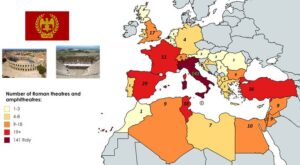
Source: bit.ly/3d5thGP
The rise and fall of the Roman Empire in 2 minutes! ✨
pic.twitter.com/WWGouc7Jwx— Xavi Ruiz (@xruiztru) January 1, 2021
The Stanford Geospatial Network Model of the Roman World
Welcome to Hell?: In Search of the Real Turkish Football
$3.72 (as of 13/12/2025 23:37 GMT +03:00 - More infoProduct prices and availability are accurate as of the date/time indicated and are subject to change. Any price and availability information displayed on [relevant Amazon Site(s), as applicable] at the time of purchase will apply to the purchase of this product.)Cityscapes Colouring Book: For Adults, Teens and Kids 11+ Years | Paris, London, Vienna, Amsterdam, Istanbul and More
$6.99 (as of 13/12/2025 23:37 GMT +03:00 - More infoProduct prices and availability are accurate as of the date/time indicated and are subject to change. Any price and availability information displayed on [relevant Amazon Site(s), as applicable] at the time of purchase will apply to the purchase of this product.)DK Top 10 Istanbul (Pocket Travel Guide)
$9.26 (as of 13/12/2025 23:37 GMT +03:00 - More infoProduct prices and availability are accurate as of the date/time indicated and are subject to change. Any price and availability information displayed on [relevant Amazon Site(s), as applicable] at the time of purchase will apply to the purchase of this product.)Fantastic Turkiye: A Wonderful Experience of a Fantastic Country: 40 Great Destinations Described (Turkey Attractions)
$39.99 (as of 13/12/2025 23:37 GMT +03:00 - More infoProduct prices and availability are accurate as of the date/time indicated and are subject to change. Any price and availability information displayed on [relevant Amazon Site(s), as applicable] at the time of purchase will apply to the purchase of this product.)DK Eyewitness Travel Guide: Istanbul
$3.21 (as of 13/12/2025 23:37 GMT +03:00 - More infoProduct prices and availability are accurate as of the date/time indicated and are subject to change. Any price and availability information displayed on [relevant Amazon Site(s), as applicable] at the time of purchase will apply to the purchase of this product.)Istanbul, City map 1:10.000, City Pocket map + The Big Five
$11.95 (as of 13/12/2025 23:37 GMT +03:00 - More infoProduct prices and availability are accurate as of the date/time indicated and are subject to change. Any price and availability information displayed on [relevant Amazon Site(s), as applicable] at the time of purchase will apply to the purchase of this product.)Speak Turkish Fast: 1500 Useful Phrases with English Translations and Pronunciation Guide
$12.99 (as of 13/12/2025 23:37 GMT +03:00 - More infoProduct prices and availability are accurate as of the date/time indicated and are subject to change. Any price and availability information displayed on [relevant Amazon Site(s), as applicable] at the time of purchase will apply to the purchase of this product.)Living in Istanbul
$29.49 (as of 13/12/2025 23:37 GMT +03:00 - More infoProduct prices and availability are accurate as of the date/time indicated and are subject to change. Any price and availability information displayed on [relevant Amazon Site(s), as applicable] at the time of purchase will apply to the purchase of this product.)The Mini Rough Guide to Istanbul and the Aegean Coast: Travel Guide with eBook
$9.63 (as of 13/12/2025 23:37 GMT +03:00 - More infoProduct prices and availability are accurate as of the date/time indicated and are subject to change. Any price and availability information displayed on [relevant Amazon Site(s), as applicable] at the time of purchase will apply to the purchase of this product.)Rick Steves Istanbul: With Ephesus & Cappadocia
$22.00 (as of 13/12/2025 23:37 GMT +03:00 - More infoProduct prices and availability are accurate as of the date/time indicated and are subject to change. Any price and availability information displayed on [relevant Amazon Site(s), as applicable] at the time of purchase will apply to the purchase of this product.)Travels With My Aunt: (Vintage Voyages)
$14.02 (as of 13/12/2025 23:37 GMT +03:00 - More infoProduct prices and availability are accurate as of the date/time indicated and are subject to change. Any price and availability information displayed on [relevant Amazon Site(s), as applicable] at the time of purchase will apply to the purchase of this product.)Biblical Turkey: A Guide to the Jewish and Christian Sites of Asia Minor
$48.95 (as of 13/12/2025 23:37 GMT +03:00 - More infoProduct prices and availability are accurate as of the date/time indicated and are subject to change. Any price and availability information displayed on [relevant Amazon Site(s), as applicable] at the time of purchase will apply to the purchase of this product.)Lonely Planet Turkiye (Travel Guide)
$16.30 (as of 13/12/2025 23:37 GMT +03:00 - More infoProduct prices and availability are accurate as of the date/time indicated and are subject to change. Any price and availability information displayed on [relevant Amazon Site(s), as applicable] at the time of purchase will apply to the purchase of this product.)Istanbul: Memories and the City
$1.35 (as of 13/12/2025 23:37 GMT +03:00 - More infoProduct prices and availability are accurate as of the date/time indicated and are subject to change. Any price and availability information displayed on [relevant Amazon Site(s), as applicable] at the time of purchase will apply to the purchase of this product.)A Guide to Biblical Sites in Greece and Turkey
$11.00 (as of 13/12/2025 23:37 GMT +03:00 - More infoProduct prices and availability are accurate as of the date/time indicated and are subject to change. Any price and availability information displayed on [relevant Amazon Site(s), as applicable] at the time of purchase will apply to the purchase of this product.)Biblical Turkey: A Guide to the Jewish and Christian Sites of Asia Minor
$64.95 (as of 13/12/2025 23:37 GMT +03:00 - More infoProduct prices and availability are accurate as of the date/time indicated and are subject to change. Any price and availability information displayed on [relevant Amazon Site(s), as applicable] at the time of purchase will apply to the purchase of this product.)Turkish Short Stories for Beginners: 20 Captivating Short Stories to Learn Turkish & Grow Your Vocabulary the Fun Way! (Easy Turkish Stories)
$13.75 (as of 13/12/2025 23:37 GMT +03:00 - More infoProduct prices and availability are accurate as of the date/time indicated and are subject to change. Any price and availability information displayed on [relevant Amazon Site(s), as applicable] at the time of purchase will apply to the purchase of this product.)DK Top 10 Istanbul (Pocket Travel Guide)
$9.26 (as of 13/12/2025 23:37 GMT +03:00 - More infoProduct prices and availability are accurate as of the date/time indicated and are subject to change. Any price and availability information displayed on [relevant Amazon Site(s), as applicable] at the time of purchase will apply to the purchase of this product.)Fodor's Essential Turkey (Full-color Travel Guide)
$16.64 (as of 13/12/2025 23:37 GMT +03:00 - More infoProduct prices and availability are accurate as of the date/time indicated and are subject to change. Any price and availability information displayed on [relevant Amazon Site(s), as applicable] at the time of purchase will apply to the purchase of this product.)The Desert and the Sown: Travels in Palestine and Syria
$0.99 (as of 13/12/2025 23:37 GMT +03:00 - More infoProduct prices and availability are accurate as of the date/time indicated and are subject to change. Any price and availability information displayed on [relevant Amazon Site(s), as applicable] at the time of purchase will apply to the purchase of this product.)Number of Roman Theatres and Amphitheatres per country.
Lonely Planet Pocket Istanbul (Pocket Guide)
$12.13 (as of 13/12/2025 23:37 GMT +03:00 - More infoProduct prices and availability are accurate as of the date/time indicated and are subject to change. Any price and availability information displayed on [relevant Amazon Site(s), as applicable] at the time of purchase will apply to the purchase of this product.)The Mini Rough Guide to Istanbul and the Aegean Coast: Travel Guide with eBook
$9.63 (as of 13/12/2025 23:37 GMT +03:00 - More infoProduct prices and availability are accurate as of the date/time indicated and are subject to change. Any price and availability information displayed on [relevant Amazon Site(s), as applicable] at the time of purchase will apply to the purchase of this product.)What NOT To Do - Turkey: An Honest, Hilarious & Helpful Guide to Traveling Smart in Turkey
$9.99 (as of 13/12/2025 23:37 GMT +03:00 - More infoProduct prices and availability are accurate as of the date/time indicated and are subject to change. Any price and availability information displayed on [relevant Amazon Site(s), as applicable] at the time of purchase will apply to the purchase of this product.)Rick Steves Istanbul: With Ephesus & Cappadocia
$22.00 (as of 13/12/2025 23:37 GMT +03:00 - More infoProduct prices and availability are accurate as of the date/time indicated and are subject to change. Any price and availability information displayed on [relevant Amazon Site(s), as applicable] at the time of purchase will apply to the purchase of this product.)Istanbul Travel Guide 2026: Top Places to Visit, Things to Do, Exploring Neighborhood, Itineraries, Festivals and Events, Food and Drink, Shopping, Day ... And Culture. (EXPLORE THE GLOBE Book 9)
$4.99 (as of 13/12/2025 23:37 GMT +03:00 - More infoProduct prices and availability are accurate as of the date/time indicated and are subject to change. Any price and availability information displayed on [relevant Amazon Site(s), as applicable] at the time of purchase will apply to the purchase of this product.)Pocket Rough Guide Istanbul: Travel Guide with eBook
$7.99 (as of 13/12/2025 23:37 GMT +03:00 - More infoProduct prices and availability are accurate as of the date/time indicated and are subject to change. Any price and availability information displayed on [relevant Amazon Site(s), as applicable] at the time of purchase will apply to the purchase of this product.)DK Top 10 Istanbul (Pocket Travel Guide)
$9.26 (as of 13/12/2025 23:37 GMT +03:00 - More infoProduct prices and availability are accurate as of the date/time indicated and are subject to change. Any price and availability information displayed on [relevant Amazon Site(s), as applicable] at the time of purchase will apply to the purchase of this product.)To the City: Life and Death Along the Ancient Walls of Istanbul
$15.00 (as of 13/12/2025 23:37 GMT +03:00 - More infoProduct prices and availability are accurate as of the date/time indicated and are subject to change. Any price and availability information displayed on [relevant Amazon Site(s), as applicable] at the time of purchase will apply to the purchase of this product.)Istanbul Travel Guide 2025/2026: Sultanahmet, Beyoğlu: Shopping and Nightlife, Kadıköy, Balat and Fener, Markets and Shopping,Hagia Sophia,Must-See ... Galata Tower. (Best Travel Guides 2025)
$11.99 (as of 13/12/2025 23:37 GMT +03:00 - More infoProduct prices and availability are accurate as of the date/time indicated and are subject to change. Any price and availability information displayed on [relevant Amazon Site(s), as applicable] at the time of purchase will apply to the purchase of this product.)Cityscapes Colouring Book: For Adults, Teens and Kids 11+ Years | Paris, London, Vienna, Amsterdam, Istanbul and More
$6.99 (as of 13/12/2025 23:37 GMT +03:00 - More infoProduct prices and availability are accurate as of the date/time indicated and are subject to change. Any price and availability information displayed on [relevant Amazon Site(s), as applicable] at the time of purchase will apply to the purchase of this product.)The History of Turkey: A Grand Chronicle of Anatolia (History of Turkey Books)
$15.99 (as of 13/12/2025 23:37 GMT +03:00 - More infoProduct prices and availability are accurate as of the date/time indicated and are subject to change. Any price and availability information displayed on [relevant Amazon Site(s), as applicable] at the time of purchase will apply to the purchase of this product.)The Amazing Mrs. Pollifax (Mrs. Pollifax Series Book 2)
$5.99 (as of 13/12/2025 23:37 GMT +03:00 - More infoProduct prices and availability are accurate as of the date/time indicated and are subject to change. Any price and availability information displayed on [relevant Amazon Site(s), as applicable] at the time of purchase will apply to the purchase of this product.)Osman's Dream: The History of the Ottoman Empire
$8.41 (as of 13/12/2025 23:37 GMT +03:00 - More infoProduct prices and availability are accurate as of the date/time indicated and are subject to change. Any price and availability information displayed on [relevant Amazon Site(s), as applicable] at the time of purchase will apply to the purchase of this product.)Turkish Short Stories for Beginners: 20 Captivating Short Stories to Learn Turkish & Grow Your Vocabulary the Fun Way! (Easy Turkish Stories)
$13.75 (as of 13/12/2025 23:37 GMT +03:00 - More infoProduct prices and availability are accurate as of the date/time indicated and are subject to change. Any price and availability information displayed on [relevant Amazon Site(s), as applicable] at the time of purchase will apply to the purchase of this product.)Turkey Travel Guide: Captivating Adventures through Rich History, Turkish Delights, Turkish Landmarks, Hidden Gems, and More (Traveling the World)
$13.69 (as of 13/12/2025 23:37 GMT +03:00 - More infoProduct prices and availability are accurate as of the date/time indicated and are subject to change. Any price and availability information displayed on [relevant Amazon Site(s), as applicable] at the time of purchase will apply to the purchase of this product.)The Towers of Trebizond: A Novel (FSG Classics)
$6.44 (as of 13/12/2025 23:37 GMT +03:00 - More infoProduct prices and availability are accurate as of the date/time indicated and are subject to change. Any price and availability information displayed on [relevant Amazon Site(s), as applicable] at the time of purchase will apply to the purchase of this product.)Biblical Turkey: A Guide to the Jewish and Christian Sites of Asia Minor
$64.95 (as of 13/12/2025 23:37 GMT +03:00 - More infoProduct prices and availability are accurate as of the date/time indicated and are subject to change. Any price and availability information displayed on [relevant Amazon Site(s), as applicable] at the time of purchase will apply to the purchase of this product.)The Desert and the Sown: Travels in Palestine and Syria
$0.99 (as of 13/12/2025 23:37 GMT +03:00 - More infoProduct prices and availability are accurate as of the date/time indicated and are subject to change. Any price and availability information displayed on [relevant Amazon Site(s), as applicable] at the time of purchase will apply to the purchase of this product.)Turkey for Kids: Travel Guide and Activity Book: Discover Turkish Culture, History, Landmarks and Traditions through Games, Puzzles and Fun Facts (Junior Globetrotters)
$9.99 (as of 13/12/2025 23:37 GMT +03:00 - More infoProduct prices and availability are accurate as of the date/time indicated and are subject to change. Any price and availability information displayed on [relevant Amazon Site(s), as applicable] at the time of purchase will apply to the purchase of this product.)DK Top 10 Istanbul (Pocket Travel Guide)
$9.26 (as of 13/12/2025 23:37 GMT +03:00 - More infoProduct prices and availability are accurate as of the date/time indicated and are subject to change. Any price and availability information displayed on [relevant Amazon Site(s), as applicable] at the time of purchase will apply to the purchase of this product.)Turkey: Center of three “Roman Empires”
Ottoman history has a meaning beyond the history of Turkey and the Turks. Today, we know that more than twenty countries in the Balkans, the Danube, the Middle East and North Africa, which have different languages, religions, races and political regimes, are facing some common problems as the owners of a common heritage. These problems are to some extent the living history of the Ottoman Empire. There were three “Roman Empires” in the Mediterranean world. These three Romes were political social systems with their own traditional structures and ideologies, different from the nationalist empires of the new ages. The third and last of these traditional Roman empires is the Ottoman Empire. That is why we say that examining the institutions and structure of this empire has a meaning beyond examining the history of the Turks.
This historical phenomenon is the common destiny and common past of the people in the Mediterranean region. Today, people on three continents have begun to look at problems with a more rational eye. “The history of the Third Roman Empire is the memory of the common past of all these peoples, sometimes with disasters and sometimes with honorable events. As each of the peoples in the Ottoman countries takes their place in the modern world, they will review the characteristics and diseases they have acquired from this common heritage together and seek precautions.
Great empires in our region at the beginning of the Middle Ages
The Middle East and the Mediterranean region is a world where the first agricultural activities were seen, and therefore urbanization and organized society, in short, the state emerged. Urbanization and organization seen around rivers in ancient times could not have occurred in arid lands. For this reason, the states created by river civilizations and fertile regions could easily dominate large areas throughout history, and the Mediterranean-Middle East world, the cradle of this civilization, witnessed the birth and continuation of great empires.
These regions have not been able to leave the traditional agricultural order and make the agricultural technological revolution for ages. The Mediterranean and Middle Eastern empires of the early and middle ages had to organize irrigation facilities to prevent drought and famine, transportation and accommodation for the continuation of trade.
In this part of the world, where arid and low-density lands stretched as far as possible, small statelets did not have a chance to survive as in Western Europe of the Middle Ages. However, a political delegation that controlled large regions had a chance for power.
For this, the medieval eastern state is the great empire. However, the primitiveness of transportation and communication technology and the inadequacy of the means of control (such as postal, bureaucratic organization, monetary system, etc.) have caused the fact that a widely used description for the eastern monarchies, namely the centralized-state type, does not exist technically.
Peasant and artisanal groups have always been subordinated to the management of local control groups. In other words, classical feudalism first emerged in Middle Eastern societies and continued until late times. However, local powers prevented the formation of a legal economic infrastructure and organization that would establish an independent state. Therefore, central state power prevailed.
In our Turkish, there are not only Arabic and Persian idioms, but also a heap of words from Italian, Greek, Syriac, Hungarian, eastern and southern Slavic languages. Likewise, many Turkish words and idioms can be found in these languages. Even this situation shows that there is no civilization that remains unique in the Mediterranean-Middle East region. The history and social order of Turkey is also a synthesis of the Mediterranean. For this reason, we enter our subject by examining the state and social order of the Sassanids, Byzantines, Arabs and Italians.
We live in this synthesis at every stage of our daily lives. Turkish cuisine is a Balkan-Middle East synthesis. It was the Ottoman order of the 16th century that brought Hungarian goulash, Rumelian vegetable dishes to the warm provinces of Mesopotamia, and Mesopotamian desserts to the tables of distant Balkan peoples.
From the Balkan states to the sheikhdoms of the Persian Gulf, it is possible to see the remnants of this administration everywhere. The borders of the republics that make up the Arab world are to some extent the borders of the former Ottoman provinces. Sometimes, it is not exactly like that, and there is a problem like in Iraq. The border of administrative units in Bulgaria is the old sanjak. The remnants of the Ottoman land system create problems in the countries where the private property regime is observed. Mecelle was in effect in Arab countries until recently.
The Middle East region has been the world of great empires. In this region, where writing was used, organized society and urbanization were seen for the first time, small states did not have a chance to survive throughout history, except during times of depression and migration. There is no other region where cultural interaction and assimilation is so strong. In the arid lands of the Middle East, where neither the small state nor the original small society culture has a chance to survive, one of the small states dominates the other small ones, just as only one of the eaglets has a chance to survive.
Civilization was born in the Middle East-Mediterranean region. But we see that traditional culture and technology started to change in the 20th century. Because of this change, the Middle East world is a whole of countries where big problems are experienced. The knowledge of Ottoman history gives the opportunity to approach these problems. The geographical composition of the Ottoman countries has changed continuously throughout the six centuries of life of the state.
Conquests and territorial losses changed the ethnic composition of the people of the country as well as the administrative division of the country. In fact, there is no need to enumerate all these changes here. Moreover, the historical geography of the Ottoman country is still far from being an issue that scientists can solve. However, when we look at the borders of the 17th century, we encounter the following situation.
The borders of the Ottoman country, starting from Transylvania and Transdanubian Hungary in the west, follow the entire Danube basin to the Black Sea, and include the Dalmatian coast, the Mediterranean islands and the whole Peloponnese-Peloponnese in the south. border in the north; Podolia extends to the steppes of Ukraine, including the Crimean peninsula, via Wallachia-Boğdan.
This whole area, together with the privileged principality, the statelets under the protection and the provinces attached to the center, constitute the Rumelia part. In the east, the border starting from Azerbaijan and Luristan included the Southern Caucasus, the protectorate and dependent states in the North Caucasus, and finally the entire Anatolian continent, Al Jazeera, Syria and Lower Mesopotamia as provinces affiliated to the center. If we consider Arabia and the Hejaz lands with the status of privileged principality, the Asian continent of the empire will be completed. In Africa, if we count Egypt, a part of Abyssinia, Libya, Tunisia and Algeria, which are called Western Hearths, we will have roughly completed the composition of the country.
It is clear that this whole area does not have a homogeneous population. Therefore, it is not difficult to understand that the state does not have a homogeneous administrative-financial structure. This is the situation that has made Ottoman history a series of problems that are difficult to solve. That’s why we generally have to be limited when dealing with issues, and the problems of the Anatolian continent will be binding for us.
There are studies that need to be done in rural and urban areas in order to know the Ottoman history. History and sociology are disciplines that should benefit from each other’s results. The concepts of sociology are the language of history. History is the laboratory of sociology. He will learn the methods and techniques for approaching historical scientific problems from sociology. The future of Turkish historiography; depends on human geography, toponymy, financial history research.
Source: Prof İlber Ortaylı. Türkiye Teşkilat ve İdare Tarihi
Welcome to Hell?: In Search of the Real Turkish Football
$3.72 (as of 13/12/2025 23:37 GMT +03:00 - More infoProduct prices and availability are accurate as of the date/time indicated and are subject to change. Any price and availability information displayed on [relevant Amazon Site(s), as applicable] at the time of purchase will apply to the purchase of this product.)ISTANBUL Travel Guide 2025-2026: History, Culture, Neighborhoods & Everyday Life Across Two Continents (CATRINA FRITZ TRAVEL GUIDE)
$4.99 (as of 13/12/2025 23:37 GMT +03:00 - More infoProduct prices and availability are accurate as of the date/time indicated and are subject to change. Any price and availability information displayed on [relevant Amazon Site(s), as applicable] at the time of purchase will apply to the purchase of this product.)Turkey Activity Book For Kids: Learn about Turkish History, Landmarks, Wildlife While Solving Word Puzzles, Mazes, Crosswords, and Coloring Pages for Kids and Families
$9.99 (as of 13/12/2025 23:37 GMT +03:00 - More infoProduct prices and availability are accurate as of the date/time indicated and are subject to change. Any price and availability information displayed on [relevant Amazon Site(s), as applicable] at the time of purchase will apply to the purchase of this product.)Speak Turkish Fast: 1500 Useful Phrases with English Translations and Pronunciation Guide
$12.99 (as of 13/12/2025 23:37 GMT +03:00 - More infoProduct prices and availability are accurate as of the date/time indicated and are subject to change. Any price and availability information displayed on [relevant Amazon Site(s), as applicable] at the time of purchase will apply to the purchase of this product.)Rick Steves Istanbul: With Ephesus & Cappadocia
$12.31 (as of 13/12/2025 23:37 GMT +03:00 - More infoProduct prices and availability are accurate as of the date/time indicated and are subject to change. Any price and availability information displayed on [relevant Amazon Site(s), as applicable] at the time of purchase will apply to the purchase of this product.)Istanbul Travel Guide 2025/2026: Sultanahmet, Beyoğlu: Shopping and Nightlife, Kadıköy, Balat and Fener, Markets and Shopping,Hagia Sophia,Must-See ... Galata Tower. (Best Travel Guides 2025)
$11.99 (as of 13/12/2025 23:37 GMT +03:00 - More infoProduct prices and availability are accurate as of the date/time indicated and are subject to change. Any price and availability information displayed on [relevant Amazon Site(s), as applicable] at the time of purchase will apply to the purchase of this product.)Istanbul Travel Guide: Captivating Adventures Through Ottoman Splendor, Byzantine Wonders, Turkish Landmarks, Hidden Gems, and More (Traveling the World)
$18.69 (as of 13/12/2025 23:37 GMT +03:00 - More infoProduct prices and availability are accurate as of the date/time indicated and are subject to change. Any price and availability information displayed on [relevant Amazon Site(s), as applicable] at the time of purchase will apply to the purchase of this product.)DK Eyewitness Travel Guide: Istanbul
$3.21 (as of 13/12/2025 23:37 GMT +03:00 - More infoProduct prices and availability are accurate as of the date/time indicated and are subject to change. Any price and availability information displayed on [relevant Amazon Site(s), as applicable] at the time of purchase will apply to the purchase of this product.)To the City: Life and Death Along the Ancient Walls of Istanbul
$15.00 (as of 13/12/2025 23:37 GMT +03:00 - More infoProduct prices and availability are accurate as of the date/time indicated and are subject to change. Any price and availability information displayed on [relevant Amazon Site(s), as applicable] at the time of purchase will apply to the purchase of this product.)Rick Steves Istanbul: With Ephesus & Cappadocia
$22.00 (as of 13/12/2025 23:37 GMT +03:00 - More infoProduct prices and availability are accurate as of the date/time indicated and are subject to change. Any price and availability information displayed on [relevant Amazon Site(s), as applicable] at the time of purchase will apply to the purchase of this product.)Rick Steves Istanbul: With Ephesus & Cappadocia
$12.31 (as of 13/12/2025 23:37 GMT +03:00 - More infoProduct prices and availability are accurate as of the date/time indicated and are subject to change. Any price and availability information displayed on [relevant Amazon Site(s), as applicable] at the time of purchase will apply to the purchase of this product.)Lonely Planet Turkiye (Travel Guide)
$16.30 (as of 13/12/2025 23:37 GMT +03:00 - More infoProduct prices and availability are accurate as of the date/time indicated and are subject to change. Any price and availability information displayed on [relevant Amazon Site(s), as applicable] at the time of purchase will apply to the purchase of this product.)Lonely Planet Pocket Istanbul (Pocket Guide)
$12.13 (as of 13/12/2025 23:37 GMT +03:00 - More infoProduct prices and availability are accurate as of the date/time indicated and are subject to change. Any price and availability information displayed on [relevant Amazon Site(s), as applicable] at the time of purchase will apply to the purchase of this product.)A Guide to Biblical Sites in Greece and Turkey
$11.00 (as of 13/12/2025 23:37 GMT +03:00 - More infoProduct prices and availability are accurate as of the date/time indicated and are subject to change. Any price and availability information displayed on [relevant Amazon Site(s), as applicable] at the time of purchase will apply to the purchase of this product.)Turkish Short Stories for Beginners: 20 Captivating Short Stories to Learn Turkish & Grow Your Vocabulary the Fun Way! (Easy Turkish Stories)
$13.75 (as of 13/12/2025 23:37 GMT +03:00 - More infoProduct prices and availability are accurate as of the date/time indicated and are subject to change. Any price and availability information displayed on [relevant Amazon Site(s), as applicable] at the time of purchase will apply to the purchase of this product.)Shadow of the Silk Road: A 7,000-Mile Journey Through Central Asia—Trade, Religions, and Ideas from China to Turkey (P.S.)
$6.99 (as of 13/12/2025 23:37 GMT +03:00 - More infoProduct prices and availability are accurate as of the date/time indicated and are subject to change. Any price and availability information displayed on [relevant Amazon Site(s), as applicable] at the time of purchase will apply to the purchase of this product.)Turkish Cookbook: Exploring the Food of a Timeless Cuisine
$22.68 (as of 13/12/2025 23:37 GMT +03:00 - More infoProduct prices and availability are accurate as of the date/time indicated and are subject to change. Any price and availability information displayed on [relevant Amazon Site(s), as applicable] at the time of purchase will apply to the purchase of this product.)DK Top 10 Istanbul (Pocket Travel Guide)
$9.26 (as of 13/12/2025 23:37 GMT +03:00 - More infoProduct prices and availability are accurate as of the date/time indicated and are subject to change. Any price and availability information displayed on [relevant Amazon Site(s), as applicable] at the time of purchase will apply to the purchase of this product.)DK Eyewitness Travel Guide Turkey (Eyewitness Travel Guides)
$12.11 (as of 13/12/2025 23:37 GMT +03:00 - More infoProduct prices and availability are accurate as of the date/time indicated and are subject to change. Any price and availability information displayed on [relevant Amazon Site(s), as applicable] at the time of purchase will apply to the purchase of this product.)The Rough Guide to Turkey (Travel Guide with eBook) (Rough Guide Main Series)
$14.29 (as of 13/12/2025 23:37 GMT +03:00 - More infoProduct prices and availability are accurate as of the date/time indicated and are subject to change. Any price and availability information displayed on [relevant Amazon Site(s), as applicable] at the time of purchase will apply to the purchase of this product.)Turkey in the Mediterranean
The Mediterranean belt we are in; It is a world consisting of Spain, Southern France, Greece and Anatolia, and in our south the North African coasts and Egypt due to the abundance of the Nile. This belt of ancient civilizations shifts to Iran via Palestine, Syria, Mesopotamia, which is called the Eastern Mediterranean, and extends from there to India and China. The peoples around the Mediterranean and in Iran have been in a fusion and interaction since ancient times. Apart from these, as the 12th century Andalusian writer Kadı Ahmed El Endulusi said, the northerners, those in the north of the Danube and the Alps, and those in the south of Egypt and the Southern Mediterranean, are outside the civilization zone due to climatic and geographical conditions and are not creative. There are slogans that we repeat without knowing or thinking about, such as “Turkey is a bridge between civilizations, its historical riches are endless”. However, we need to think and consider them based on a certain knowledge.
Although Anatolia is not a continent where writing was found like Mesopotamia and Egypt, or even where the first example of a city-state emerged. But as time, he adopted and followed Mesopotamia and its written civilization, arts and crafts very quickly and stepped into written history in 2 thousand BC. A similar development, provided that it is not very intense, can only be seen in today’s Europe around the millennium. Today’s France, Britain and the south of Germany waited for the conquests of Julius Caesar, this famous commander and statesman, in order to step into the civilized history of humanity. For example, the Iranians are a nation that has introduced themselves to humanity since 1500 BC, that is, they write.
Of course, Persian has been written for 2,500 years, despite the changes it has undergone over time. The same is true for Greek. Arabic dominated Egypt and Syria in the middle ages with the Islamic conquests, but the languages that preceded it, namely Egypt’s Coptic language, Syria’s Aramaic, still live in church worship and written literature. In Anatolia, languages and ethnic groups disappeared one after another, but the architectural and artistic remnants of material civilization continued uninterruptedly. The last conquerors to come to Anatolia, let us frankly say, are the last people on earth to appropriate and translate a country as their culture, religion and language.
Even the Germanization of Europe was completed five centuries before Sultan Alparslan’s victory at Manzikert. Despite this identity change, Anatolia’s riches live above and below the ground, under a historical integrity. Anatolia started late but progressed rapidly Turkey is also the leader in the Mediterranean region in terms of variety and density in terms of the richness of archaeological and surface artifacts. It is Egypt, which can compete with itself and contains an inexhaustible wealth. Italy, Greece and Rome contain the most significant works in terms of medieval and modern times.
Turkey is a very rich country in terms of number and variety of ancient artifacts. Egypt and Italy compete with him in this regard. Egypt’s own ancient civilization is an inexhaustible treasure. The Mamluk period is a color added to it. Italy recognized the ancient Greek civilization in its south and in Sicily. Roman civilization is undoubtedly evident in Italy with its most important works. But let’s open a parenthesis here. The most magnificent works of Roman civilization outside of Italy are in Anatolia and then in Syria. Italy, as a country that created modern civilization, has the riches of the Renaissance in almost every region.
Byzantium in Ravenna and some Islamic ruins in Sicily are a fallout. The most important wealth of Islamic civilization in the north of the Mediterranean is in the Andalusia region of Spain. In Turkey, the extensions of the Hittites, Urartians, Mesopotamian civilizations before the Greco-Roman period are spread over a very wide area. The central structures of Byzantine civilization are in this country. Seljuk and Ottoman civilization came on top with their most magnificent examples. Let alone the restoration of the Seljuk caravanserais that surrounds the country today, we do not even have a complete inventory except for a work by Professor Ayşıl Yavuz. It is clear that these are not limited to a few.
Architects and masters of every newcomer to Anatolia benefited from the experience of the old ones and even their staff. The basic structures have been preserved. Just as the Hagia Yorgi Church and the great mosque in Leda in Palestine are adjacent, the Hacı Bayram Mosque adjacent to the temple of Augustus in Ankara is not a rare example. What then is the destruction? The most important factor is the abandonment of cities. In all of Western Anatolia, port cities are established at the mouths of the ports, as in the case of Ephesus, which bears the title of Metropolitan of Asia.
This convenient strategic location enriches and enlarges cities, but alluviums carried by the river cut off the city’s connection with the sea within a few centuries. The swamp and disease dim the life and future of the city, and the great earthquakes deplete the city. A wealthy country, Aegean cities have not seen truly devastating invasions, but time and geography have done that. Historians who are confused by timing and geography in Western thought; They say that the Muslim Turkish invaders destroyed a civilization by burning and destroying these cities. However, it was the end of the 13th century for the Turks to reach Western Anatolia. It is not possible to understand how the 800 years between the 4-5th century and the 13th century were removed from this calculation sheet.
Honestly, no one makes the history of the depression in a region as meticulously as the sattical times. It is enough to look at the examples in the Ephesus Museum; For example, the colossal statues of Emperor Augustus and his wife Livian had the sign of the cross engraved on their foreheads and were supposedly baptized. Early Christians did not wait for Muslim conquests 1000 years later to decapitate and smash the heads of the gods, goddesses and emperors of the polytheistic world. When the Turks came to this continent, however, they preferred to rehabilitate the old cities.
Pronunciation is different in the names used, for example; Like Paleokastron = Balıkesir or Kengriyon = Çankırı or Tripolis = Tirebolu or Tefreke = Divrigi in the sense of “Old Fortress”. Establishing a new city in an unfamiliar geographical environment is crazy, I guess this exception was only tried in Bursa Yenişehir or Ermenek in Karaman province. Anatolia was not a continent entirely inhabited by Hellenes; If that were the case, we’d be Hellenized too. Countless languages and tribes lived. For this reason, the country, whose conquest began in the 12th century, at the latest in the known history, became Turkish very quickly, and after a while, Genoese and Venetian merchants named our country Turchia or Turkmenya. Cities and castles appear in the most unlikely places on the coast and in the surrounding mountains. There are Georgian and Armenian churches in the Black Sea mountains and inland.
History of Turks; From the Steppes of Central Asia to the Gates of Europe
Imagine that a great tribe has traveled thousands of kilometers in three centuries… What does this do if it doesn’t change the world? This is how the Turks changed the world. For this reason, we do not need to produce an imaginary history and heroes, but only to learn the truth.
The History of the Turks begins with the debates on the origin of the Turks, who established one of the strongest civilizations of the Middle East when they were a nomadic tribe.
Subsequently, they migrated from Central Asia to Anatolia and Turkified the region and the principles of the culture they built there… All the details of the debates about where the name of Turks, a nation with a great heritage, a strong structure and historical richness, came from and how long this geography has been called Turkey…
The story of Anatolia, which took its present form with important wars and retreats, moreover, with painful land losses…
The reasons why Turkey was an important country for Europe and a problem to be dealt with during the 400 years between the Battle of Manzikert and the conquest of Bosnia…
Moreover, from the Oghuzs to the Kipchaks, from the Pechenegs to the Seljuks and the Ottomans, a great empire, and not only the Turks; The history of the Russians, Mamluks, Karakoyunlu, Ghaznavids, Safavids, Chinese, Indians and Arabs…
In other words, the place of the Turks, who have always influenced the civilizations that shared the same geography for centuries and played an important role in bringing Eastern and Western cultures to each other, is under the spotlight.
Source: Prof Dr İlber Ortaylı
Notes on a Foreign Country: An American Abroad in a Post-American World
$3.74 (as of 13/12/2025 23:37 GMT +03:00 - More infoProduct prices and availability are accurate as of the date/time indicated and are subject to change. Any price and availability information displayed on [relevant Amazon Site(s), as applicable] at the time of purchase will apply to the purchase of this product.)Istanbul & Northwest Turkey Travel Reference Map WP
$9.89 (as of 13/12/2025 23:37 GMT +03:00 - More infoProduct prices and availability are accurate as of the date/time indicated and are subject to change. Any price and availability information displayed on [relevant Amazon Site(s), as applicable] at the time of purchase will apply to the purchase of this product.)Pocket Rough Guide Istanbul: Travel Guide with eBook
$7.99 (as of 13/12/2025 23:37 GMT +03:00 - More infoProduct prices and availability are accurate as of the date/time indicated and are subject to change. Any price and availability information displayed on [relevant Amazon Site(s), as applicable] at the time of purchase will apply to the purchase of this product.)Istanbul Travel Guide 2025/2026: Sultanahmet, Beyoğlu: Shopping and Nightlife, Kadıköy, Balat and Fener, Markets and Shopping,Hagia Sophia,Must-See ... Galata Tower. (Best Travel Guides 2025)
$11.99 (as of 13/12/2025 23:37 GMT +03:00 - More infoProduct prices and availability are accurate as of the date/time indicated and are subject to change. Any price and availability information displayed on [relevant Amazon Site(s), as applicable] at the time of purchase will apply to the purchase of this product.)To the City: Life and Death Along the Ancient Walls of Istanbul
$15.00 (as of 13/12/2025 23:37 GMT +03:00 - More infoProduct prices and availability are accurate as of the date/time indicated and are subject to change. Any price and availability information displayed on [relevant Amazon Site(s), as applicable] at the time of purchase will apply to the purchase of this product.)DK Top 10 Istanbul (Pocket Travel Guide)
$9.26 (as of 13/12/2025 23:37 GMT +03:00 - More infoProduct prices and availability are accurate as of the date/time indicated and are subject to change. Any price and availability information displayed on [relevant Amazon Site(s), as applicable] at the time of purchase will apply to the purchase of this product.)What NOT To Do - Turkey: An Honest, Hilarious & Helpful Guide to Traveling Smart in Turkey
$9.99 (as of 13/12/2025 23:37 GMT +03:00 - More infoProduct prices and availability are accurate as of the date/time indicated and are subject to change. Any price and availability information displayed on [relevant Amazon Site(s), as applicable] at the time of purchase will apply to the purchase of this product.)Istanbul: City of Majesty at the Crossroads of the World
$5.99 (as of 13/12/2025 23:37 GMT +03:00 - More infoProduct prices and availability are accurate as of the date/time indicated and are subject to change. Any price and availability information displayed on [relevant Amazon Site(s), as applicable] at the time of purchase will apply to the purchase of this product.)ISTANBUL Travel Guide 2025-2026: History, Culture, Neighborhoods & Everyday Life Across Two Continents (CATRINA FRITZ TRAVEL GUIDE)
$4.99 (as of 13/12/2025 23:37 GMT +03:00 - More infoProduct prices and availability are accurate as of the date/time indicated and are subject to change. Any price and availability information displayed on [relevant Amazon Site(s), as applicable] at the time of purchase will apply to the purchase of this product.)The Turkish Cookbook
$39.98 (as of 13/12/2025 23:37 GMT +03:00 - More infoProduct prices and availability are accurate as of the date/time indicated and are subject to change. Any price and availability information displayed on [relevant Amazon Site(s), as applicable] at the time of purchase will apply to the purchase of this product.)The Turkish Cookbook
$39.98 (as of 13/12/2025 23:37 GMT +03:00 - More infoProduct prices and availability are accurate as of the date/time indicated and are subject to change. Any price and availability information displayed on [relevant Amazon Site(s), as applicable] at the time of purchase will apply to the purchase of this product.)The History of Turkey: A Grand Chronicle of Anatolia (History of Turkey Books)
$15.99 (as of 13/12/2025 23:37 GMT +03:00 - More infoProduct prices and availability are accurate as of the date/time indicated and are subject to change. Any price and availability information displayed on [relevant Amazon Site(s), as applicable] at the time of purchase will apply to the purchase of this product.)A Guide to Biblical Sites in Greece and Turkey
$11.00 (as of 13/12/2025 23:37 GMT +03:00 - More infoProduct prices and availability are accurate as of the date/time indicated and are subject to change. Any price and availability information displayed on [relevant Amazon Site(s), as applicable] at the time of purchase will apply to the purchase of this product.)Fodor's Essential Turkey (Full-color Travel Guide)
$16.64 (as of 13/12/2025 23:37 GMT +03:00 - More infoProduct prices and availability are accurate as of the date/time indicated and are subject to change. Any price and availability information displayed on [relevant Amazon Site(s), as applicable] at the time of purchase will apply to the purchase of this product.)The Desert and the Sown: Travels in Palestine and Syria
$0.99 (as of 13/12/2025 23:37 GMT +03:00 - More infoProduct prices and availability are accurate as of the date/time indicated and are subject to change. Any price and availability information displayed on [relevant Amazon Site(s), as applicable] at the time of purchase will apply to the purchase of this product.)DK Eyewitness Travel Guide Turkey (Eyewitness Travel Guides)
$12.11 (as of 13/12/2025 23:37 GMT +03:00 - More infoProduct prices and availability are accurate as of the date/time indicated and are subject to change. Any price and availability information displayed on [relevant Amazon Site(s), as applicable] at the time of purchase will apply to the purchase of this product.)Turkish Short Stories for Beginners: 20 Captivating Short Stories to Learn Turkish & Grow Your Vocabulary the Fun Way! (Easy Turkish Stories)
$13.75 (as of 13/12/2025 23:37 GMT +03:00 - More infoProduct prices and availability are accurate as of the date/time indicated and are subject to change. Any price and availability information displayed on [relevant Amazon Site(s), as applicable] at the time of purchase will apply to the purchase of this product.)Turkish Cookbook: Exploring the Food of a Timeless Cuisine
$22.68 (as of 13/12/2025 23:37 GMT +03:00 - More infoProduct prices and availability are accurate as of the date/time indicated and are subject to change. Any price and availability information displayed on [relevant Amazon Site(s), as applicable] at the time of purchase will apply to the purchase of this product.)Turkey Travel Guide: Captivating Adventures through Rich History, Turkish Delights, Turkish Landmarks, Hidden Gems, and More (Traveling the World)
$13.69 (as of 13/12/2025 23:37 GMT +03:00 - More infoProduct prices and availability are accurate as of the date/time indicated and are subject to change. Any price and availability information displayed on [relevant Amazon Site(s), as applicable] at the time of purchase will apply to the purchase of this product.)Lonely Planet Pocket Istanbul (Pocket Guide)
$12.13 (as of 13/12/2025 23:37 GMT +03:00 - More infoProduct prices and availability are accurate as of the date/time indicated and are subject to change. Any price and availability information displayed on [relevant Amazon Site(s), as applicable] at the time of purchase will apply to the purchase of this product.)Images of Turkey
Hospitality of the Turkish people is very impressive and also Turkey as a country too impressive as a whole.
We use the photograph essentially as a series of sketches, showing the expressions of ordinary people in Turkey so black-and-white photographs are used photographing people in Turkey has been a pure joy is Turkish people always exclude warm and openness at the same time this photographic instances are very meaningful as As we enjoy becoming involved in their lives staying in contact with them always
Turkish people are the most welcoming people I’ve encountered in the 22 countries I’ve visited. They’re very helpful and proud of their culture. Although not many Turkish speak English, they would still go out of their way to try to help you. One time I was lost in the old town of Istanbul and my phone died. I was looking for the ferry terminal on Galata area (near the bridge). I asked a young lady for a direction, she said “no English” but she asked me to wait in a gesture. At first I was confused, then I saw her talking to other people, she came back minute later with a gentle man. She introduced me to a man who could speak English. I can’t thank her enough. I had a few other experience that sort of thing. I was very impressed. I’ve visited Izmir, Kusadasi, Ephesus, Pamukkale, and Cappadocia. I had the same experience. One of my very good friend whom I’ve met through YT comment section is Turkish. We’ve met when I was in Istanbul. He toured me around and he is the nicest person I’ve ever met in all of my travels. Even the cab drivers are very nice. I could say that Turkish hospitality are at par with Mexicans., 2 of my favourite countries.
https://www.youtube.com/watch?v=7N1kXTYfpdE

